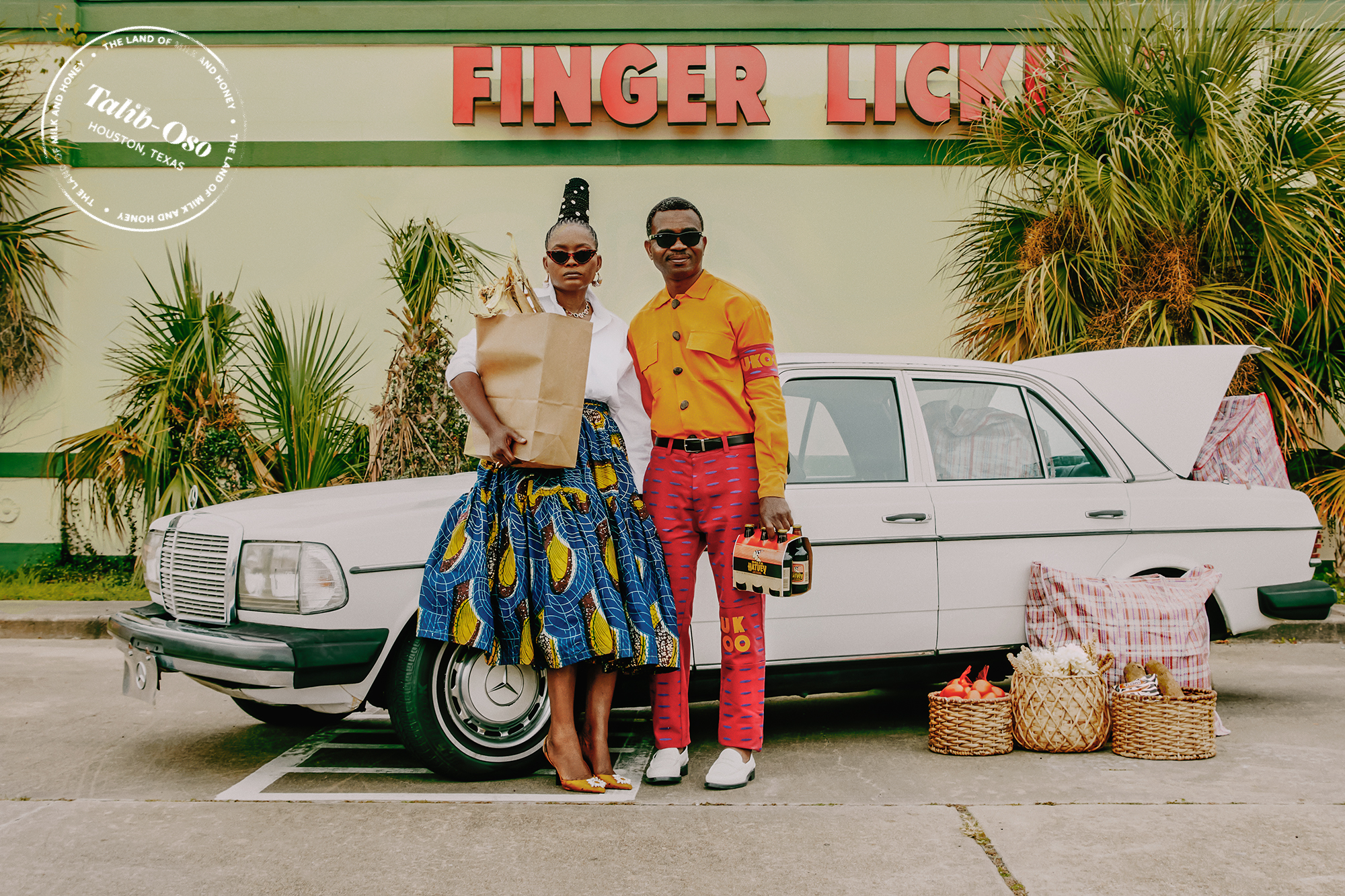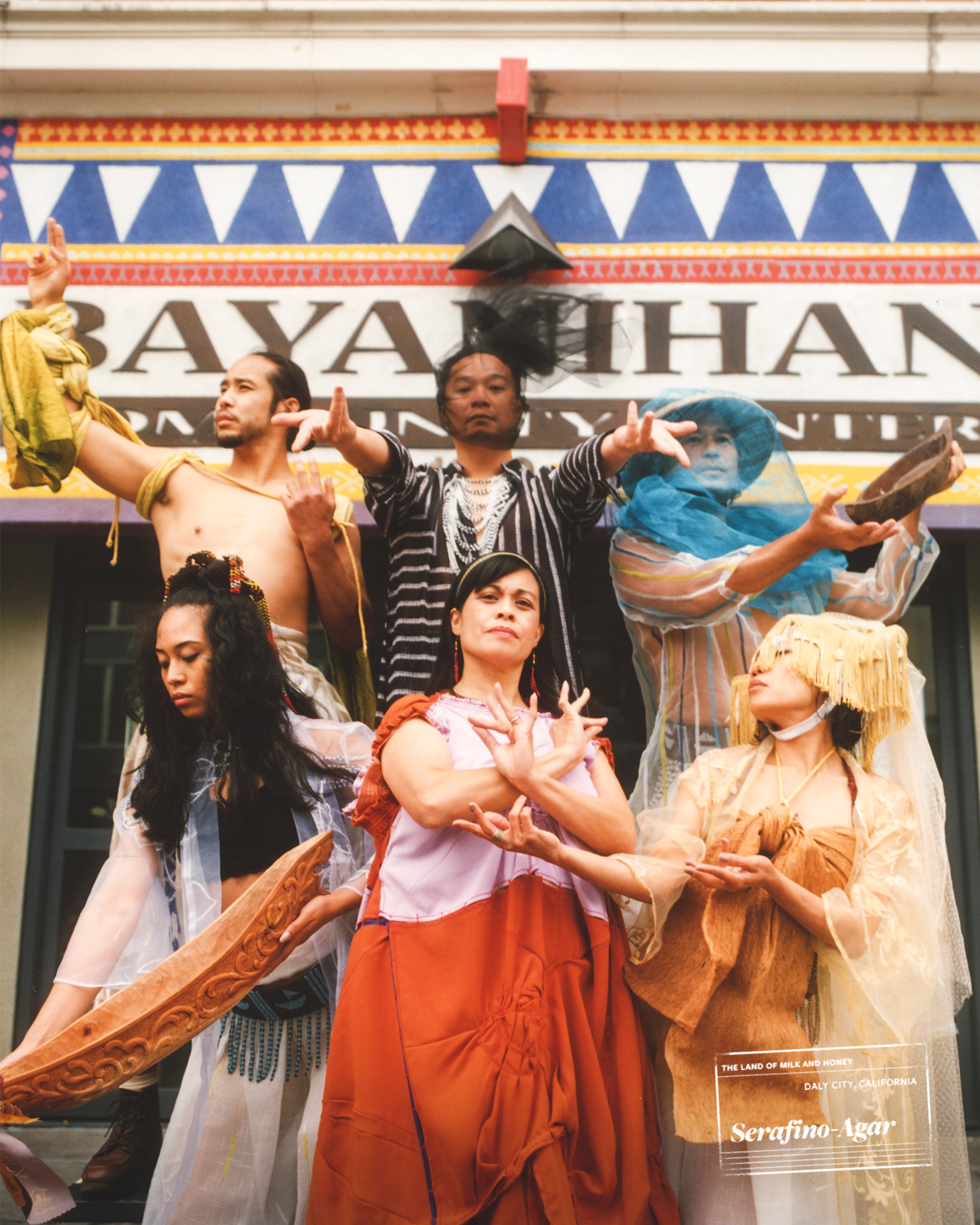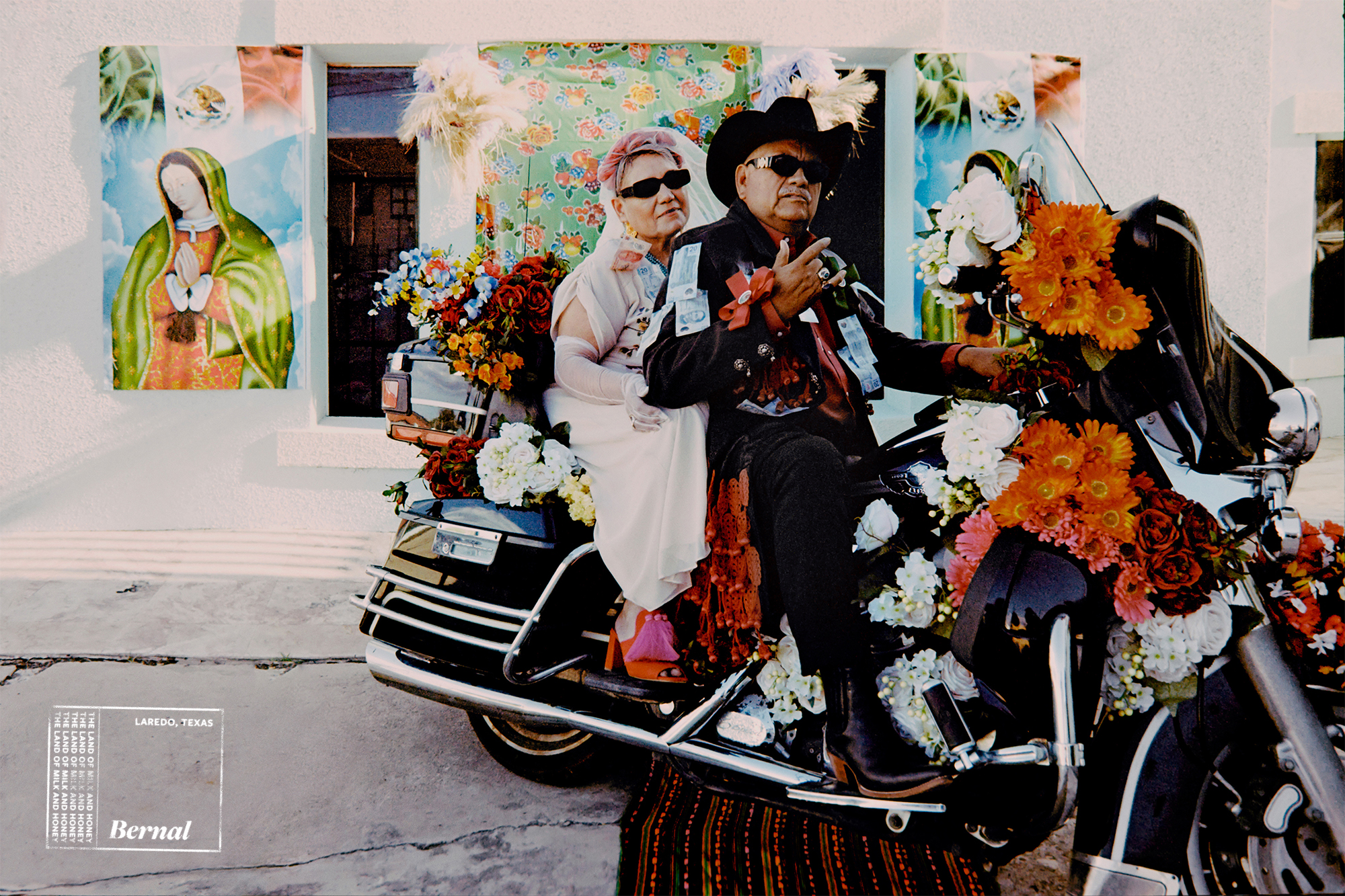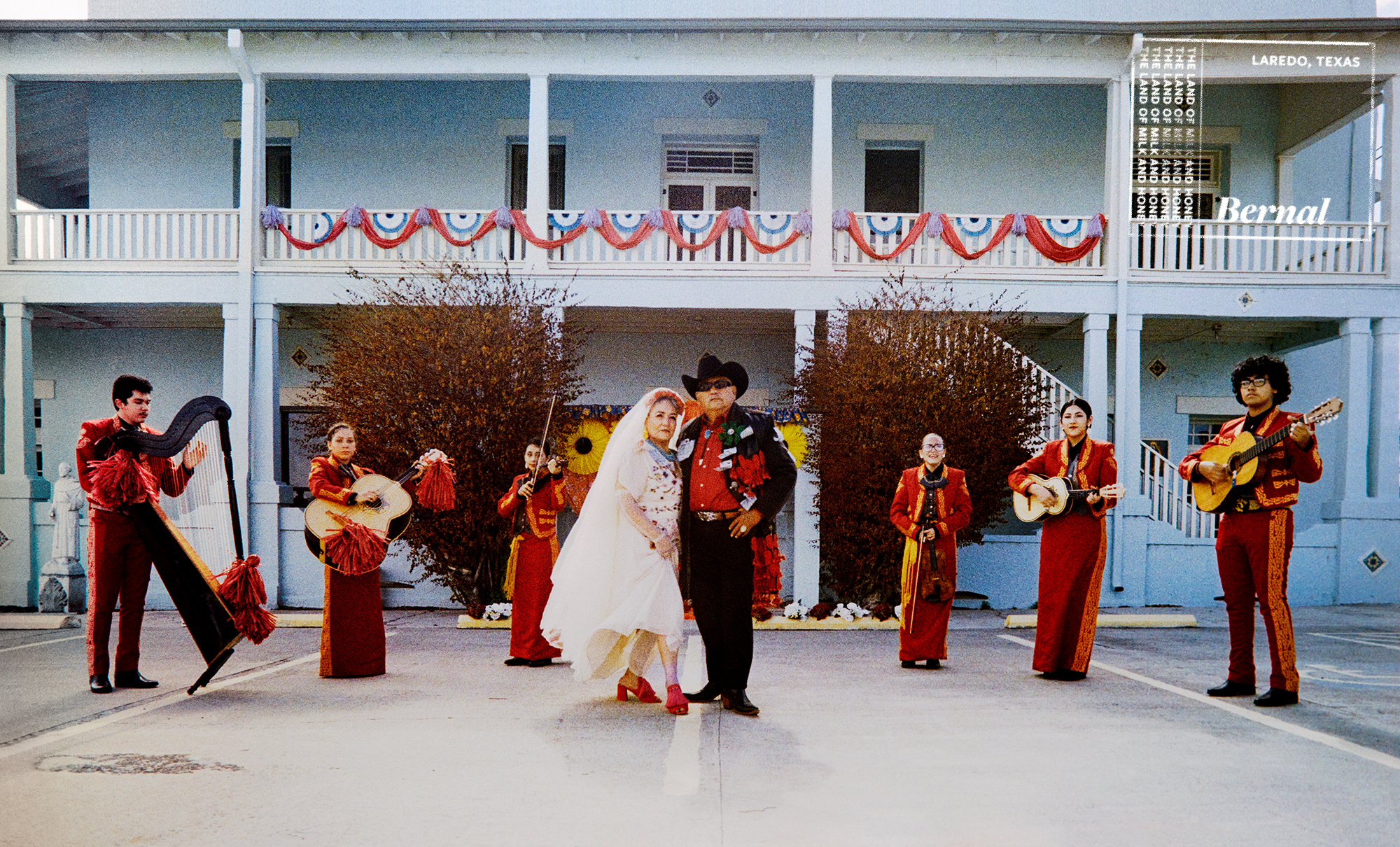Despite the pain and violence rooted in the migratory history of the US, from the violence of colonization to African people being torn from their homeland, this country has maintained a reputation as a “land of milk and honey” for immigrants worldwide. Before, post-Trump and even under the current administration, the narrative around migration to North America has revolved around exclusion. The focus on the strife and obstacles to put down roots in this country extends from the harrowing experiences of migrants at the heavily-militarized US-Mexico Border and mass deportations to racist policies like the Muslim ban.
The Land of Milk and Honey, a photo series helmed by Nigerian American creative Alexander-Julian Gibbson, attempts to reframe this narrative by highlighting the joy and rich diversity of immigrant communities that have flourished in the US. Taking cues from his background in fashion and from the aesthetic of family portraiture, these warm stylized depictions of immigrant families in their homes wearing traditional garb reveal a more complex portrait of the US. Alexander-Julian partnered with Instagram on the series, which he organized largely using the app, making use of open-calls on his IG stories, DMs and tags to to cast authentic families.

“It was after Trump [was elected] that I felt really emotionally charged by the rhetoric that was going around about immigration and xenophobia,” says Alexander-Julian. “This ‘go back to where you came from’ shit was really frustrating for me. I always thought the beauty of America was that it was a place where everybody could come from everywhere, and add their own cultural flavor. That’s what makes America great: people from all over the world have come here and intertwined their cultures into the fabric of the United States.”
No matter what white supremacist rhetoric abounds, there is no denying immigrants — particularly Black, Asian and Latinx immigrants across the diaspora — have woven themselves into the fabric of this country. A part of this tapestry are the Koreatowns, Chinatowns, Little Havanas, Little Nigerias, Little Haitis, Chicanx communities and other culture pockets around the US that immigrant communities have made a homebase away from the homeland.
Ahead of the release of The Land of Milk and Honey series, we spoke with Alexander-Julian about the immigrant communities he worked with and shifting the narrative around migration in the US.

Where did you get the idea to shoot The Land of Milk and Honey?
I’m Nigerian but born and raised in Houston, the largest population outside of Nigeria. The largest Nigerian church outside of Nigeria started in my living room, all my friends are Nigerian, we ate Nigerian food, the nines. I felt very tapped into my culture through my community. Whenever I would go back [to Nigeria], there’s so many nuances that people expected me not to understand because I didn’t live there. Like, y’all — it’s mini Nigeria in Houston.
I have a similar experience as a Venezuelan immigrant who came over to the US very young and was raised here. Family would introduce me as “the American cousin” when I went back and it’s like… no, I fully speak Spanish, eat arepas, know my culture. It creates a weird rift.
I was in Miami and I had just learned about Little Haiti and Little Havana and I thought about how these communities have the same exact experience that I had living in Houston and Nigeria. I was thinking about Chinatown in New York, Koreatown in LA, the Ethiopians that are in DC… all these immigrant cultures have pockets that emulate home and are home base for people of the diaspora to come and feel a connection to home. You have all these people talking about what America is supposed to look like, but immigrants and people of color are also a part of the face of America. I wanted to do this project to kind of reshape what that face is. One of the things that makes America great is the concept of “The American Dream,” coming here from anywhere and having an equal opportunity to become great, successful and be free.

This project is attempting to visually define what “The American Dream” meant to our parents. I know you know, but nobody idolizes the US more than an immigrant parent no matter how rough it gets. First-gen and younger immigrants who grew up here are often at odds with that.
Exactly! That’s another reason why I thought it was so important to talk to generations. I feel like my perspective on America is very much different from my mom’s. The people who came here saw America as this promised land. Being born here and seeing the things that go on… like, this is the promised land y’all was talking about? [Laughs.] Let’s have hope for America, but if we are going to be this promised land that we’re boasting about, we have to stop and make our communities and our country something that shows what we want it to be. We need to realize what’s wrong and adjust it.
What was the first cultural pocket that you shot?
Nigeria! I was back home in Houston taking care of my mom during the pandemic and I tapped this woman who I’ve been working with literally since I was 15. One of the reasons I partnered with Instagram for this project was because I use it for almost everything: casting, DMing people in the community, posting an open call on my stories. That’s how I found my Haitian family in Miami. I was really excited about collaborating with photographers from the diasporas [including Alexander Saladrigas, Peter Ash Lee, Travis Matthews, and Orly Anan]. I wanted everyone I brought on to feel like this personal project was personal to them and had a lens for their culture. I styled all the projects, but there’s only so much that I can find for research without being from these communities. The project felt so personal to everybody that was a part of it and I had so many moments where I had chills — I expected the project to be beautiful but I never thought about the emotional pull it would have on me. For my Cuban family, I was the only person on set that didn’t speak Spanish. Despite the language barrier, I felt so much love from them; the grandma in the shoot told me I was a part of her family now. I was so grateful for them for letting me into their homes, into their families and document their experiences.

As someone who is first-gen, what did you learn about yourself and your relationship to migration?
I love the idea of seeing people and thinking about what makes them that person. The project to me was about tracing back our cultures. I love anthropology and seeing the way cultures merge and evolve. I learned about how Cubans are influenced by Spain and Yoruba culture in Nigeria. It felt like distant cousins. I learned so much about the different strifes each community goes through. When I was shooting Filipino, Korean and Chinese families we were seeing a lot of the violent crimes happening against Asian Americans. When I was shooting my Haitian family, there were a lot of Haitian immigrants being kicked out of America. It taught me to really pay attention to what’s happening in the world.
This project is so empowering, specifically for communities of color who migrated here, and I love how it shifts the narrative of immigrant stories in the US. What impact do you hope this project has? How do you hope it grows?
I want people to understand that although these families have their lineage elsewhere, they have made contributions to this land. We’re in such a time of polarizing rhetoric that juxtaposes the beauty of what America was meant to be. I partnered with Instagram for this to be accessible to everyone. In my perfect world, this becomes an exhibit that travels all over the country, something you could see in Middle America and not just New York or LA or Miami. I hope it’s something that gets people to have the conversation you and I are having now.






